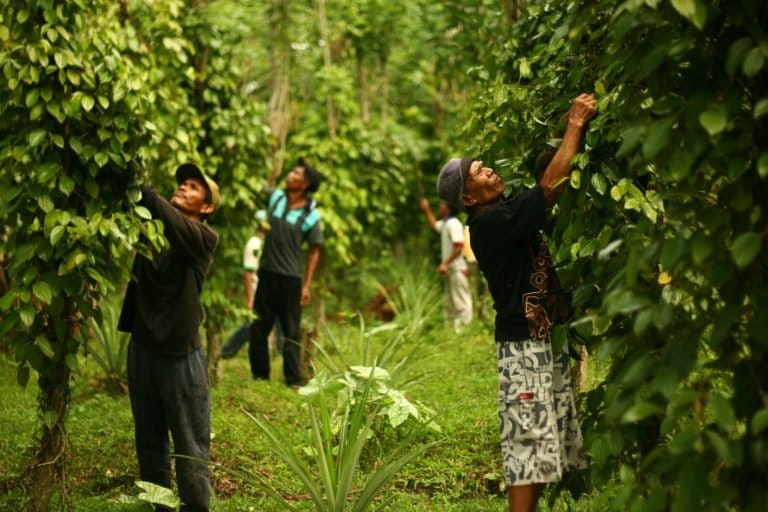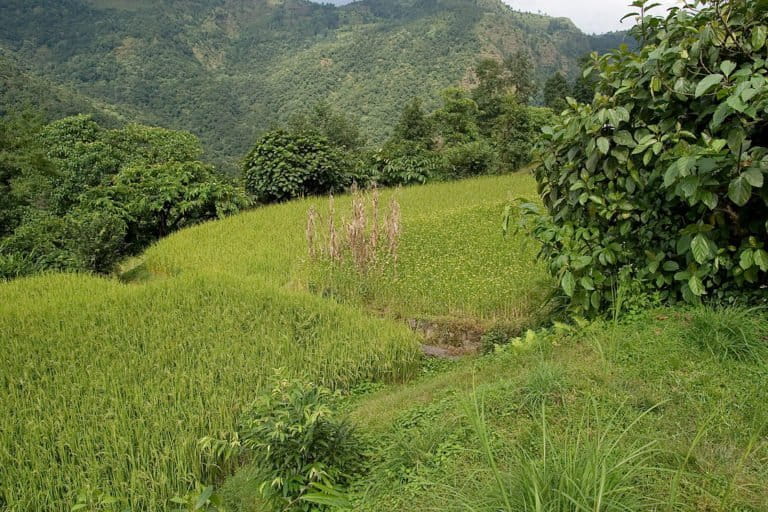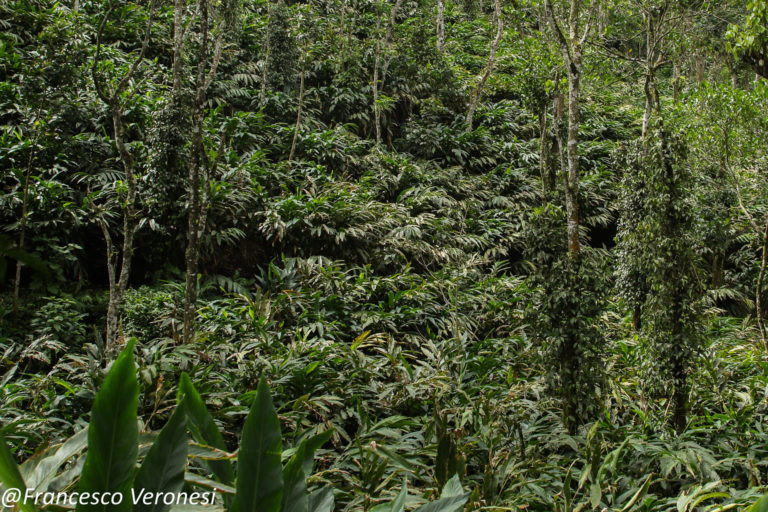- A set of maps from research published in 2020 in the journal Nature suggested that restoring ecosystems in “priority areas” offered a cheap and effective way to slow climate change and stem the global loss of species.
- Soon after the study’s release, however, researchers from around the world raised concerns about the areas identified by the study, whether the biodiversity- and climate-related gains would be as substantial as the authors claimed, and how decision-makers might use the maps to guide policy.
- The study aimed to point out optimal spots for restoration based on the biggest boost they could provide to avoid the extinction of species and sequester the most carbon at the lowest costs. But, the authors wrote, the study did not consider “socio-economic issues,” and the maps were not intended to directly inform local implementation.
- The study’s critics say that, in spite of the authors’ intentions, investors and policymakers could use the maps in ways that might not consider the impacts on local communities.
In October 2020, a set of maps appeared in the pages of Nature apparently proposing a straightforward solution to the twin crises of global biodiversity loss and climate change. Splashed with blues, greens, yellows and reds, the maps were the product of a modeling study headed by Brazilian economist Bernardo Strassburg.
The message — seen by some as a call to action in one of the world’s most prominent journals — seemed simple: Restoring ecosystems in the spots highlighted in red offered a cheap and effective way to slow climate change and stem the loss of species. It was also likely the first study to integrate global biodiversity, climate and cost considerations into a single restoration modeling exercise, Gislene Ganade told Mongabay just after it was published. Ganade is an ecologist and coordinator of the Restoration Ecology Laboratory at Brazil’s Federal University of Rio Grande do Norte, who wasn’t involved in the study.
Yet within weeks, researchers from around the world raised concerns about the “priority areas for ecosystem restoration” the study had identified and how decision-makers might use them.
Specifically, critics of the study said efforts guided by the maps could put communities at risk, especially as less-industrialized, tropical countries hold more than half of the priority areas. They also questioned whether restoration could deliver the levels of climate- and biodiversity-related benefits the authors claimed. What’s more, the emphasis on rewilding the areas in question could divert the world’s attention away from the task of cutting — not just offsetting — carbon emissions.

Today, the world is nearly two years into the U.N. Decade on Ecosystem Restoration, and the United Nations will hold its climate and biodiversity conferences before the end of 2022. At these forums, world leaders will be looking for uncomplicated solutions to address the world’s changing climate and species hemorrhage. Targets such as the protection of 30% of the Earth’s land and oceans by 2030 serve as a guiding star for these ambitions, but they also hang in the balance.
The danger of studies such as the one led by Strassburg, critics say, is that politicians, policymakers and investors poised to support restoration efforts may not have the time or interest to dig into the details of how, for example, restoration in a given location will affect nearby communities. Instead, they may direct resources toward restoration in these areas as prescribed by these global models without further consideration.
In the 2020 study, Strassburg and his colleagues note that it wasn’t possible to include “important socio-economic issues that could affect restoration prioritization” in their global modeling. And in a response to criticism of their study, they add that they didn’t intend for their maps “to guide local implementation [of restoration] directly.”
Still, as some researchers see it, those caveats are not enough to avoid potentially dangerous consequences as a result of these types of prioritization exercises and restoration in general.
Restoration efforts are necessary to address climate change, “but the potential is highly uncertain,” said Jonathan Doelman, a researcher in land use and climate at PBL, the Netherlands Environmental Assessment Agency. Doelman and a colleague from PBL wrote a response to the study by Strassburg and his colleagues that was published Sept. 7 in Nature. Restoration according to the priorities laid out in the study runs the risk of pitting these efforts against food security in some spots, he added.

(Over)estimating the benefits of restoration?
For the 2020 study, Strassburg and his colleagues used satellite data from 1992-2015 to map out 28.7 million square kilometers (about 11.1 million square miles) of formerly “natural” ecosystems that had been converted to either cropland or pastureland for livestock. They then modeled hundreds of restoration “scenarios” to pinpoint optimal areas for the amount of carbon that could be sequestered, the reduced risk of extinction for more than 20,000 animal species, and the lowest economic costs. The team used a previous study led by Strassburg looking at restoration in Brazil’s Atlantic Forest to price out ecosystem rehabilitation on the world’s converted lands.
The analysis led to the maps, which ranked these converted lands according to their “priority” for restoration. Guided by these maps, they gamed out what could happen as a result of restoring the 15% of converted lands identified as the highest priority for the combination of climate- and biodiversity-related gains and costs. That proportion is in line with the objective of Aichi Biodiversity Target 15 calling for the restoration of 15% of degraded ecosystems. By the team’s calculations, restoration in these key spots would mean the removal of 14% of all emissions of CO2 since the 19th century. It could also stave off 60% of the extinctions likely to be sparked by these land conversions.
When Doelman first read the paper, he said he was puzzled by the claim that rewilding these areas could sequester 30% of the CO2 added to the atmosphere since the beginning of the Industrial Revolution. Such headline-grabbing statistics, he says, likely stemmed from the low value the authors had assigned to all converted lands. The Strassburg-led team used a “standard value” of just 6 metric tons of carbon per hectare, regardless of whether a given unit of land held to pasture, cropland, or tree-anchored agroforestry.
But a hectare of multicrop agroforestry can hold much more than 6 metric tons of carbon, Doelman and his colleagues wrote in their response to the Strassburg study. A 2021 study, for example, found agroforestry systems in Indonesia with carbon content ranging from 37 to more than 100 metric tons per hectare.

Higher baseline carbon concentrations mean that the carbon gains from restoration to natural forests would be smaller than the paper assumes, Doelman said. “That’s just a wrong assumption, basically.”
Bernardo Strassburg did not respond to multiple emails and telephone calls to his offices at Brazil’s International Institute for Sustainability and the Pontifical Catholic University of Rio de Janeiro. But in his team’s response to Doelman, also published in Nature in September, they wrote, “We strongly disagree … that we have overestimated the scale of plausible contributions or failed to consider practical limitations to their delivery.”
The team did a subsequent analysis at a finer scale and increased the carbon content value for mosaic landscapes to 40 metric tons per hectare. Despite these changes, they wrote, the amount of carbon they say could be sequestered fell within the margin of error for the values they originally reported.
Doelman said he appreciated the more detailed analysis. Still, he said the potential bump in carbon siphoned by restored landscapes projected by the paper is “way, way too optimistic.”
“They are overestimating it in our view.”

Similarly, other researchers took issue with the Strassburg team’s handling of biodiversity data. It demonstrates that the tropics are critical repositories of large numbers of species, as well as carbon, said Marion Pfeifer, a tropical landscape ecologist and conservation scientist at the U.K.’s Newcastle University.
“That’s a no-brainer,” Pfeifer added. “You don’t need that map for it.”
But it also skews the priorities toward restoring these parts of the Earth without accounting for the importance of rich and varied ecosystems elsewhere such as boreal forests, said Pfeifer, who co-authored another comment that was published by Nature July 13.
Strassburg and his colleagues used data from the IUCN Red List of Threatened Species to map out species’ ranges for their study.
“That’s probably the best available data that you can use at the moment,” Pfeifer said. But this global data set lays out “very coarse representations of species distribution,” and therefore lacks the nuance necessary to prioritize areas for restoration, she added.
For example, the IUCN data may indicate that certain species are forest-dependent, when in reality, they may be capable of adapting to other types of habitat, she said.
“There are some species [that] if you increase the forest area, that’s good for them, and it has to be natural forest,” Pfeifer added. “Some of the species are happy to go outside the forest. They are happy to use agroforestry landscapes.”
How the study handles agroforestry landscapes turns out to be a concern for researchers looking at the human rights implications of the study’s results as well.

Who pays the price for restoration?
The Strassburg-led study also caught the attention of Forest Fleischman, an associate professor in forest resources at the University of Minnesota in the U.S.
“The first thing I did was I zoomed into a place I knew pretty well,” Fleischman told Mongabay. “I was like, OK, let’s see what their priorities are in India.”
Fleischman spent a year living in the state of Kerala on the country’s southwestern coast. On the Strassburg team’s map of optimal areas for restoration, much of Kerala is red, indicating the highest priority to restore.
“That’s screwed up,” he said. “The minute I saw that, I was like, this is wrong.”
A lot of Kerala is covered with “highly productive and biodiverse agricultural systems,” he wrote in the critique of the Strassburg paper co-authored with Pfeifer and several other colleagues.
Removing the people from that land to start the centuries-long process of regrowing tropical forest could be devastating to these communities, Fleischman said. It could also lead to further ecosystem destruction, potentially forcing farmers to drain nearby wetlands to plant the crops on which their families rely.
“I don’t think that’s what Strassburg et al. think they’re advocating for,” Fleischman said. “But the problem is they don’t control [what happens] once they’ve put this out there.
“I’ve spent 15 years studying Indian policymaking around forest policy,” he said. “Every time there’s a call to plant more trees, or grow more forests for carbon, India unveils a new plan that involves large amounts of planting trees, often on lands with contested land tenure with Indigenous people.”
In their rebuttal to Fleischman and Pfeifer’s critique, the Strassburg-led team wrote, “When properly planned and implemented, restoration can strengthen community bonds, create jobs, generate income and increase the provision of nature’s contributions to people.”
But to Fleischman, that aspiration can have little basis in on-the-ground reality.
“Those might be the people who have the most to gain from restoration,” he said, “but they might also be the people who have the most to lose.”

Strassburg’s team also said it wasn’t possible to integrate these finer-scale concerns into their global analysis and that their maps were only intended to be “a starting point.”
But the danger lies in the gap between those intentions and how policymakers and investors actually go about rewilding, reforestation and afforestation, said Matthew Fagan, an ecologist and associate professor of geography and environmental systems at the University of Maryland, Baltimore County, in the U.S.
He said it starts with the title of the Strassburg-led paper, “Global priority areas for ecosystem restoration.”
“[The word] ‘priority’ has its own urgency,” Fagan told Mongabay. “If we define areas as high priority for restoration, there’s such a mania right now to plant trees in the world that people are going to do it.”
Fagan was the co-author of a comment posted at the bottom of the Nature landing page of the original article but not officially published by the journal.
Fleischman said he agreed that the word “priorities” sends the wrong message.
“Our business as scientists is to document the distribution of biophysical phenomena,” he said. “I don’t think they identified restoration priorities. I don’t think any scientist has any business saying what the priorities are.“
Pfeifer, too, questioned the need for prioritization maps. Pfeifer and Fleischman contend that more “bottom-up,” democratic processes would better serve restoration efforts and the people most apt to be affected, positively or negatively, by them.
“If you have a landscape anywhere in the world where you feel like restoration could improve biodiversity, well-being, and climate change mitigation and adaptation outcomes, then you can start doing that,” Pfeifer told Mongabay. “A just and effective approach to restoration begins by working with the people who live on and make a living from the land to identify their priorities for restoration.”

One map ‘to rule them all’
Critics say maps like these bolster the power that wealthy countries and political elites wield in pinpointing spots for restoration from afar instead of being guided by the communities that live nearby. Shifting the burden of restoration to areas of the Global South, especially to address climate change, might also allow carbon-emitting countries and companies in the Global North to avoid reducing their own emissions, critics add.
“Maps have power,” Fagan said. “It’s like the one ring to rule them all.”
But without a dedicated section in their study assessing the potential risk to affected communities, the Strassburg team’s maps could be misused, Fagan said.
“Science does get used as a post facto justification for what politicians wanted to do in the first place,” Fleischman said, often without appropriate consideration for the people in those communities.
Doelman, Pfeifer and Fagan all agreed that it was unlikely Strassburg and his colleagues were recommending restoration that would lead to the dispossession of local community lands or the impingement of communities’ ability to grow enough food. Still, exercises that call out optimal areas for restoration and could be used to guide serious efforts — even if that is not the authors’ intention — must be done carefully, they argue.
Fagan offered an alternative approach, perhaps one that sets more realistic targets for the amount of carbon that could be sequestered as a result of restoration while allowing the people who live there to remain, he said.
“I think that would have been a more realistic prioritization exercise,” Fagan said. “It also would have been a less dangerous one.”
Additional reporting by Karla Mendes.
Banner image: Women preparing the Gnetum (okok) nursery in the village of Minwoho, Cameroon, as part of an agroforestry project. Image by Ollivier Girard/CIFOR via Flickr (CC BY-NC-ND 2.0).
John Cannon is a staff features writer with Mongabay. Find him on Twitter: @johnccannon
Learn more about restoration on Mongabay’s podcast, listen here:
Citations:
Doelman, J. C., & Stehfest, E. (2022). The risks of overstating the climate benefits of ecosystem restoration. Nature, 609(7926), E1-E3. doi:10.1038/s41586-022-04881-0
Fleischman, F., Coleman, E., Fischer, H., Kashwan, P., Pfeifer, M., Ramprasad, V., … Veldman, J. W. (2022). Restoration prioritization must be informed by marginalized people. Nature, 607(7918), E5-E6. doi:10.1038/s41586-022-04733-x
Holl, K. D., Reid, J. L., & Fagan, M. E. (2021). Unpublished comment. Retrieved from https://www.nature.com/articles/s41586-020-2784-9/
Siarudin, M., Rahman, S. A., Artati, Y., Indrajaya, Y., Narulita, S., Ardha, M. J., & Larjavaara, M. (2021). Carbon sequestration potential of agroforestry systems in degraded landscapes in West Java, Indonesia. Forests, 12(6), 714. doi:10.3390/f12060714
Strassburg, B. B. N., Beyer, H. L., Crouzeilles, R., Iribarrem, A., Barros, F., de Siqueira, M. F., … Uriarte, M. (2019). Strategic approaches to restoring ecosystems can triple conservation gains and halve costs. Nature Ecology & Evolution, 3(1), 62-70. doi:10.1038/s41559-018-0743-8
Strassburg, B. B. N., Iribarrem, A., Beyer, H. L., Cordeiro, C. L., Crouzeilles, R., Jakovac, C. C., … Visconti, P. (2020). Global priority areas for ecosystem restoration. Nature, 586 (7831), 724-729. doi:10.1038/s41586-020-2784-9
Strassburg, B. B. N., Iribarrem, A., Beyer, H. L., Cordeiro, C. L., Crouzeilles, R., Jakovac, C. C., … Visconti, P. (2022). Reply to: The risks of overstating the climate benefits of ecosystem restoration. Nature, 609(7926), E4–E6. doi:10.1038/s41586-022-04882-z
Strassburg, B. B. N., Iribarrem, A., Beyer, H. L., Cordeiro, C. L., Crouzeilles, R., Jakovac, C. C., … Visconti, P. (2022). Reply to: Restoration prioritization must be informed by marginalized people. Nature, 607(7918), E7–E9. doi:10.1038/s41586-022-04734-w
‘Nature has priority’: Rewilding map showcases nature-led restoration
FEEDBACK: Use this form to send a message to the author of this post. If you want to post a public comment, you can do that at the bottom of the page.
